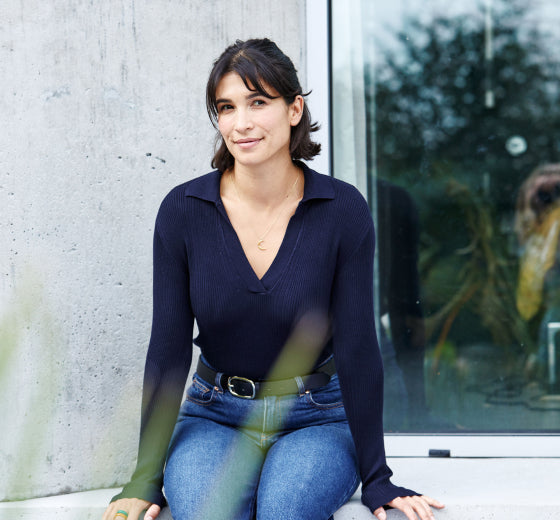
Thriving together - life in a microbial world
4 Min read
You are only 10% human.
The rest? Microbes. Tiny bacteria, fungi, and viruses that have been your partners since the beginning. Technically speaking you have around 30 trillion human cells and just as many microbial ones. And when it comes to genes, the microbes win hands down. They outnumber your human DNA by hundreds of times. So in many ways, you are more them than you.
There’s no evolutionary mistake here, they're not hitchhiking by accident. There’s a reason that you have trillions of microbes living within your gut and countless more across your skin, mouth, and private parts. Each play a role in keeping you healthy.
So, before you freak out and reach for the hand sanitiser, consider this; in nature, nothing thrives alone. Forests, jungles, coral reefs, they all rely on connection and diversity. Your body is no different.
Your gut microbiome is a living ecosystem. Every species contributes to its balance. A rich and varied microbial community supports everything from digestion, immune function, metabolism, and even mental health.
Friendly bacteria outcompete potential pathogens, while microbes often labelled as ‘bad’ are only an issue when they dominate. When in balance, they’re part of the orchestra. And a great piece of music only works when every player has their part.

We see the same principle everywhere in nature. Flowers and bees, coral and algae, plants and soil microbes, each thrives because of the other. It’s the reciprocal relationship, not isolation, that creates strength. And your body is no different. Right now, trillions of microbes are sustaining you through that same sacred agreement of give and take.
Fighting our friends
However, for much of the 20th century, we’ve been in battle with the very thing that makes life possible. We scrubbed, sanitised, and sterilised our homes, our food, even our soils, trying to wipe microbes from existence when perhaps the approach is learning to live with them.
There’s no question that at one point in time, this mindset saved millions of lives. Antibiotics and hygiene have fundamentally changed everything for those whose health outcomes were otherwise pretty bleak. But now, the pendulum has swung too far. The world health organisation faces major global concerns with antibiotic resistance. Our sterile soils and monocropping practices have had wide reaching effects on species of animals, insects, plants and our own diets. Gut imbalances, autoimmune flare-ups and allergies may even be the unintended side effects of our attempt to dominate the microbial world.
These tiny, clever organisms have been around far longer than us. They evolve. They adapt. They survive. Perhaps it's time we learn from them. Perhaps it’s time to start choosing alliance.
The importance of the terrain
Nature teaches us that thriving life starts with a healthy environment. David Attenborough’s recent film ‘Ocean’ demonstrates how restoring the seabed is crucial to rebuilding ocean ecosystems. Similarly, regenerative farming focuses on soil diversity first. Then plants, animals, and insects flourish.

Let’s apply this to the gut. Instead of only adding in new species of bacteria, we must tend to the landscape. That means caring for the gut barrier, nurturing the environment, and then feeding the microbes that live within it.
This idea isn’t entirely new. Back in the 19th century, Louis Pasteur (famous for “germ theory”) argued that microbes were the root cause of disease. But his contemporary at the time, Antoine Béchamp, suggested the environment or “terrain” was equally important in determining whether or not microbes make you sick. In his theory, if your internal environment is strong and balanced, microbes are less likely to cause disease.
Now, modern science is circling back. We see that gut barrier integrity, microbial diversity, and whole-body resilience matter just as much as the bugs themselves. This is the next-generation approach to gut health: care for the terrain, nurture the microbes, and let the whole system flourish together.

How to Live With Microbes
So, how do we make peace with our microbes, keeping the good guys happy so they can keep the trickier ones in check? A few simple but powerful ways:
-
Share the love. Human connection is microbial connection. Hugs, handshakes, kisses, even in-person conversations allow for microbial exchange. Yet another reason to weave social time into your wellness toolkit.
-
Step outside daily. Nature is a microbial masterpiece. Gardening, walking barefoot, wild swimming all connect you to a richer microbial diversity than indoor life ever can.
-
Feed your own microbes well. Prebiotic and probiotic (fermented) foods as a daily dose. Aim for variety and colour in your meals, seasonal shifts in ingredients and plethora of plants to encourage a thriving, diverse gut community.
-
Breathe it in. Each deep breath draws in millions of microbes. Where you breathe, forest, sea, mountain air, matters too - so when you can, aim for natural surroundings. When you can’t, open your windows.
-
Support the soil. Diversity begins in the ground. Whenever possible, choose organic fruit and veg to sidestep pesticides and herbicides that disrupt soil (and gut) ecosystems.
-
Clean, but gently. A little dirt is good. Opt for natural cleaning alternatives over harsh bleaches to help preserve the microbiome of your home.
-
Supplement wisely. Formulas like True Biome nurture the terrain: prebiotics to feed, postbiotics to signal, and L-glutamine to support the gut barrier - helping your inner ecosystem flourish.
